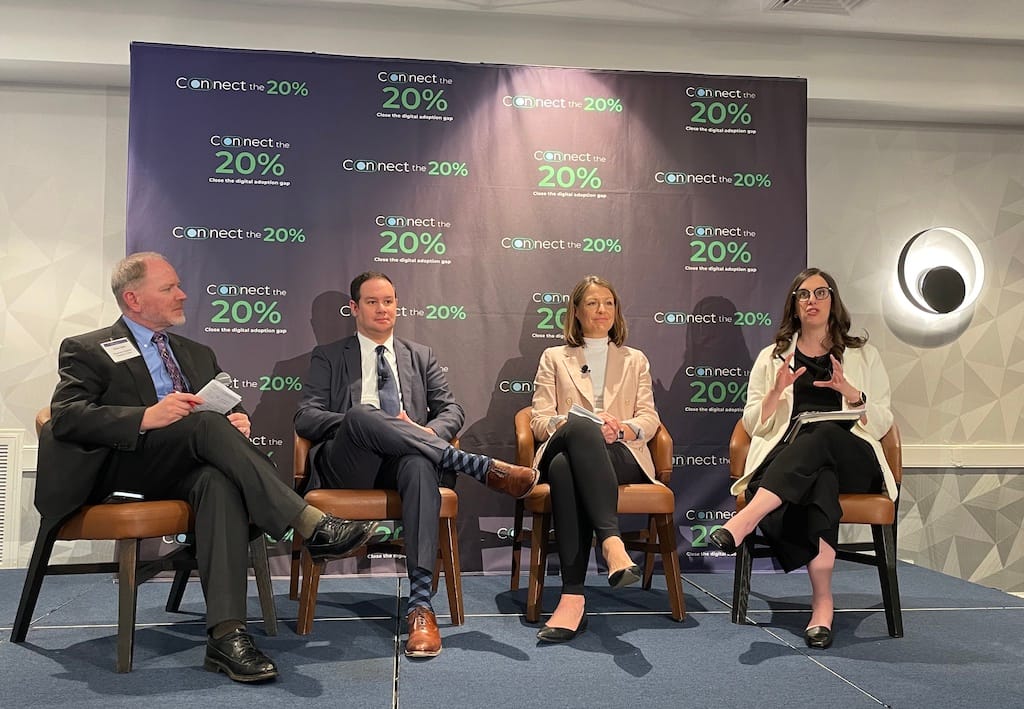Federal Officials Agree: Infrastructure Alone Will Not Close the Digital Divide
Officials from broadband funding programs emphasized the important of non-deployment projects at the Connect20 Summit in Washington.
Jake Neenan

WASHINGTON, November 14, 2023 – Federal officials from three broadband funding programs said on Tuesday that expanding infrastructure is not enough to close the digital divide.
“It’s not enough to just have a line that goes to your house,” said Sarah Morris, a deputy administrator at the Commerce Department, the agency responsible for the Biden administration’s $42.5 billion broadband expansion program. “If you can’t afford that connection, that is not of service to you. If you don’t have the devices to connect to that line, you’re not going to be able to get online in a meaningful way.”
She spoke at the Connect20 Summit as part of a panel with officials from the Treasury Department, which administers the $10 billion Capital Projects Fund, and the Department of Agriculture, whose ReConnect program has allocated $3.3 billion to rural broadband on top of its longstanding Rural Utilities Service subsidy. Broadband Breakfast editor Drew Clark moderated the discussion.
They echoed the position of advocates who have pushed for a more comprehensive approach to expanding broadband access and adoption.
And funding agencies seem to agree. More than $1 billion of the Treasury’s CPF funds have been allocated to projects that build community centers rather than infrastructure, and all providers are required to participate in the Affordable Connectivity Program, a monthly internet subsidy.
“These are places where people can congregate and digital navigators can work,” said Joey Wender, director of the CPF. Digital navigators refers to people who work to get communities acquainted with online services.
The National Telecommunications and Information Administration, where Morris works, oversees a dedicated digital equity grant in tandem with the larger Broadband Equity, Access and Deployment program. The NTIA requires states to produce a digital equity plan – a plan to address broadband adoption gaps in rural and low-income communities, often through information sessions and affordability efforts – as part of the BEAD program.
That $2.75 billion digital equity grant program is being administered in three phases: planning grants, capacity grants, and competitive grants.
The $60 million set aside for planning grants has largely been disbursed. It’s intended to help states draft their digital equity plans. According to the NTIA, 28 states have released drafts of their plans for public comment. Final drafts are due to the NTIA within one year of receiving planning grant funds.
Capacity grants are set to start up in 2024, with $1.44 billion being made available for states to implement the plans they draw up with planning grant funds.
In addition to states, the $1.25 billion competitive grant program will be open to applications from nonprofits, local governments, and anchor institutions like libraries. It’s set to accept those applications after capacity grants are awarded.
To stay involved with the Digital Navigator movement, sign up at the Connect20 Summit.









Member discussion